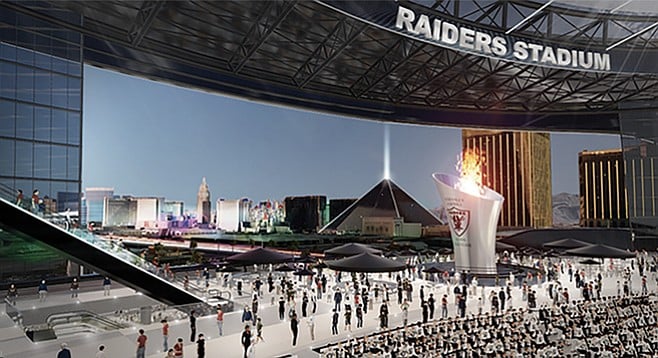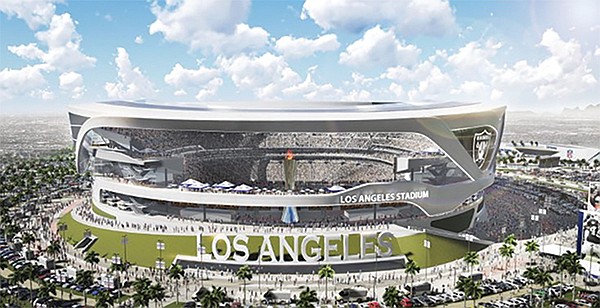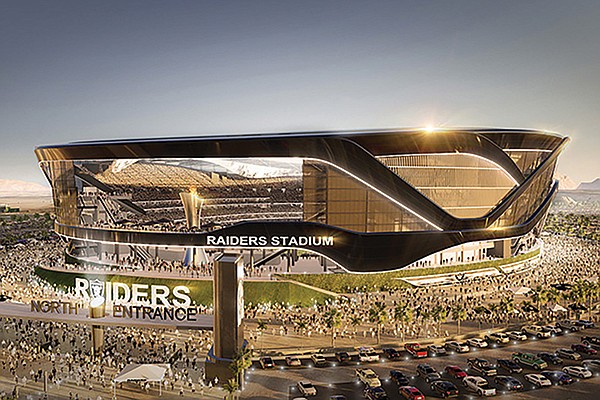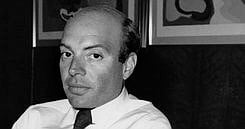 Facebook
Facebook
 X
X
 Instagram
Instagram
 TikTok
TikTok
 Youtube
Youtube

“You know, when I came into the National Football League, many of our owners owned horses, owned dog tracks, owned all the familiar habitats of gamblers and gambling. We have learned to accept this in the National Football League. We have people, as I say, who own hotels in Las Vegas, and it is not frowned upon.”
Uttering those surprisingly honest words in the early 1980s was the controversial and cunning Al Davis, now deceased, the major owner of the Oakland Raiders, who himself was involved with casino owners. When he dared to tell the truth about fellow team owners, Davis was being deposed by an attorney in a lawsuit. The subject of team owners’ gambling and disreputable associations had come up in the deposition.

On another occasion, Davis blurted candidly, “[The bookmakers] have contacts with every owner in the league.”
From the beginning of the National Football League in 1920, the team owners have been big-time gamblers, often with ties to organized crime. Team financiers were associates of mobsters such as Al Capone. But the league had managed to keep its history relatively quiet, pretending to frown on gambling. Pulling off this hypocrisy was not difficult: the media, which make a bundle from pro sports, have no interest in exposing the league’s ties to vermin.

Decades ago, Carroll Rosenbloom, a team owner, big-time gambler, and major investor in Bahamian casinos, had several bones to pick with Pete Rozelle, a Rancho Santa Fe resident who was commissioner of the National Football League for three decades. According to the book Interference: How Organized Crime Influences Professional Football, by Dan E. Moldea, Rosenbloom hired a private eye to dig up dirt on Rozelle. Moldea dug up a classic quote by author David Harris: “Pete Rozelle was an exceedingly difficult person upon whom to find dirt. The commissioner didn’t run around with women, and, though he drank, it was rarely to excess. He had nothing to do with Las Vegas, and his only significant involvement with gambling was navy poker games during World War II.”
So, here was a notorious gambler, Rosenbloom, in a league run by gamblers and gangsters, trying to smear the commissioner because he had perhaps stuck his toe in Las Vegas. This was typical of pro football in the mid-1970s. Very few, particularly in the press, talked about the National Football League’s sleazy history — other than Al Davis, who let the cat out of the bag.
But times change. Look at the situation today. The Oakland Raiders, now run by Davis’s son Mark, want to move to Las Vegas, the nation’s gambling haven. Forty years ago, that would have been out of the question.

But that’s not all. The rendering of the stadium the Raiders want to build will feature an eternal flame devoted to — gulp — Al Davis. Last year, the Raiders wanted to build a Los Angeles–area stadium with the San Diego Chargers. (Indeed, today’s Vegas rendering and last year’s L.A. rendering are very similar.) For some time, the L.A. Chargers/Raiders stadium was to have an eternal flame devoted to Al Davis, but the idea dropped by the wayside, as did the two teams’ attempt to crack the Los Angeles market.

There may have been a reason the eternal Davis flame didn’t make it in L.A.: Davis was despised by Chargers personnel. Rosenbloom might have described the source of that animus most succinctly. Growled Rosenbloom one day, “I like Al Davis because he is a mean, conniving s.o.b. just like I am.”

Davis was an investor with Allen Glick, who was the developer in a big shopping center. Glick lived with his family in a posh, well-guarded La Jolla home. Beginning in the 1970s, Glick headed a company named Argent. Through acquisitions, Argent came to own Las Vegas’s Hacienda Hotel/Casino, the Stardust Resort & Casino, the Fremont Hotel and Casino, and the casino in the Marina Hotel. The purchases were financed through the Teamsters Central States pension fund, a notorious fount of Mafia money.
Many considered Glick an impotent Mafia front. Mobsters connected with Argent let Glick know that he had no power.
Tamara Rand, a prominent San Diego realtor, was very close to Glick. But in such circles, money takes precedence over friendships. Rand filed a $560,000 suit against Glick over a real estate deal. Shortly, she was murdered gangland style. Glick’s lawyer told him not to respond to the cops’ oral queries. Glick became a major target of the investigation.
Davis had plunked $5000 into Glick’s Oakland shopping center. The media reported that Davis’s $5000 had turned into $1 million. As the Rand story burgeoned, Rozelle was unhappy. How could the league conceal its dirty secrets when Tamara Rand, Allen Glick, and Al Davis were on the front page day after day? Rozelle suggested to Davis that he get out of the investment, although Rozelle didn’t force the issue. Some others involved in the deal — NFL coaches Chuck Knox, Don Shula, and John Ralston, for instance — scrambled out, but Davis refused to sever his Glick connection. As a result, he was investigated by the Federal Bureau of Investigation and Internal Revenue Service.
Eventually, Glick became a cooperating witness, feeding the government information on mobsters who had skimmed an estimated $7 million to $15 million from Argent casinos. Several of the gangsters were sentenced to prison. The government claimed it was convinced that Glick was a front who didn’t know what had been going on. Glick was a lawyer, but he insisted that when he was buying the casinos, he had no idea that the Teamsters Central States fund was controlled by the Mafia. That claim elicited guffaws from many organized-crime experts, particularly lawyers. But Glick was never charged.
Davis spent much of his career in court. He sued the National Football League and won. The league sued him and won. He sued the league and lost. In one case, the judge ruled that the National Football League could not mention Davis’s gambling/mob connections in the suit, because it could be “highly prejudicial.”
Davis’s infamy burgeoned when the tiny town of Irwindale paid him $10 million to consider locating the Raiders there. Davis snatched the $10 million and blew town. Irwindale was out $20 million because of legal fees, environmental studies, and the like.
Remember: a fellow team owner called Davis “a mean, conniving s.o.b.” That testament of character is worthy of an eternal flame in the National Football League.


“You know, when I came into the National Football League, many of our owners owned horses, owned dog tracks, owned all the familiar habitats of gamblers and gambling. We have learned to accept this in the National Football League. We have people, as I say, who own hotels in Las Vegas, and it is not frowned upon.”
Uttering those surprisingly honest words in the early 1980s was the controversial and cunning Al Davis, now deceased, the major owner of the Oakland Raiders, who himself was involved with casino owners. When he dared to tell the truth about fellow team owners, Davis was being deposed by an attorney in a lawsuit. The subject of team owners’ gambling and disreputable associations had come up in the deposition.

On another occasion, Davis blurted candidly, “[The bookmakers] have contacts with every owner in the league.”
From the beginning of the National Football League in 1920, the team owners have been big-time gamblers, often with ties to organized crime. Team financiers were associates of mobsters such as Al Capone. But the league had managed to keep its history relatively quiet, pretending to frown on gambling. Pulling off this hypocrisy was not difficult: the media, which make a bundle from pro sports, have no interest in exposing the league’s ties to vermin.

Decades ago, Carroll Rosenbloom, a team owner, big-time gambler, and major investor in Bahamian casinos, had several bones to pick with Pete Rozelle, a Rancho Santa Fe resident who was commissioner of the National Football League for three decades. According to the book Interference: How Organized Crime Influences Professional Football, by Dan E. Moldea, Rosenbloom hired a private eye to dig up dirt on Rozelle. Moldea dug up a classic quote by author David Harris: “Pete Rozelle was an exceedingly difficult person upon whom to find dirt. The commissioner didn’t run around with women, and, though he drank, it was rarely to excess. He had nothing to do with Las Vegas, and his only significant involvement with gambling was navy poker games during World War II.”
So, here was a notorious gambler, Rosenbloom, in a league run by gamblers and gangsters, trying to smear the commissioner because he had perhaps stuck his toe in Las Vegas. This was typical of pro football in the mid-1970s. Very few, particularly in the press, talked about the National Football League’s sleazy history — other than Al Davis, who let the cat out of the bag.
But times change. Look at the situation today. The Oakland Raiders, now run by Davis’s son Mark, want to move to Las Vegas, the nation’s gambling haven. Forty years ago, that would have been out of the question.

But that’s not all. The rendering of the stadium the Raiders want to build will feature an eternal flame devoted to — gulp — Al Davis. Last year, the Raiders wanted to build a Los Angeles–area stadium with the San Diego Chargers. (Indeed, today’s Vegas rendering and last year’s L.A. rendering are very similar.) For some time, the L.A. Chargers/Raiders stadium was to have an eternal flame devoted to Al Davis, but the idea dropped by the wayside, as did the two teams’ attempt to crack the Los Angeles market.

There may have been a reason the eternal Davis flame didn’t make it in L.A.: Davis was despised by Chargers personnel. Rosenbloom might have described the source of that animus most succinctly. Growled Rosenbloom one day, “I like Al Davis because he is a mean, conniving s.o.b. just like I am.”

Davis was an investor with Allen Glick, who was the developer in a big shopping center. Glick lived with his family in a posh, well-guarded La Jolla home. Beginning in the 1970s, Glick headed a company named Argent. Through acquisitions, Argent came to own Las Vegas’s Hacienda Hotel/Casino, the Stardust Resort & Casino, the Fremont Hotel and Casino, and the casino in the Marina Hotel. The purchases were financed through the Teamsters Central States pension fund, a notorious fount of Mafia money.
Many considered Glick an impotent Mafia front. Mobsters connected with Argent let Glick know that he had no power.
Tamara Rand, a prominent San Diego realtor, was very close to Glick. But in such circles, money takes precedence over friendships. Rand filed a $560,000 suit against Glick over a real estate deal. Shortly, she was murdered gangland style. Glick’s lawyer told him not to respond to the cops’ oral queries. Glick became a major target of the investigation.
Davis had plunked $5000 into Glick’s Oakland shopping center. The media reported that Davis’s $5000 had turned into $1 million. As the Rand story burgeoned, Rozelle was unhappy. How could the league conceal its dirty secrets when Tamara Rand, Allen Glick, and Al Davis were on the front page day after day? Rozelle suggested to Davis that he get out of the investment, although Rozelle didn’t force the issue. Some others involved in the deal — NFL coaches Chuck Knox, Don Shula, and John Ralston, for instance — scrambled out, but Davis refused to sever his Glick connection. As a result, he was investigated by the Federal Bureau of Investigation and Internal Revenue Service.
Eventually, Glick became a cooperating witness, feeding the government information on mobsters who had skimmed an estimated $7 million to $15 million from Argent casinos. Several of the gangsters were sentenced to prison. The government claimed it was convinced that Glick was a front who didn’t know what had been going on. Glick was a lawyer, but he insisted that when he was buying the casinos, he had no idea that the Teamsters Central States fund was controlled by the Mafia. That claim elicited guffaws from many organized-crime experts, particularly lawyers. But Glick was never charged.
Davis spent much of his career in court. He sued the National Football League and won. The league sued him and won. He sued the league and lost. In one case, the judge ruled that the National Football League could not mention Davis’s gambling/mob connections in the suit, because it could be “highly prejudicial.”
Davis’s infamy burgeoned when the tiny town of Irwindale paid him $10 million to consider locating the Raiders there. Davis snatched the $10 million and blew town. Irwindale was out $20 million because of legal fees, environmental studies, and the like.
Remember: a fellow team owner called Davis “a mean, conniving s.o.b.” That testament of character is worthy of an eternal flame in the National Football League.
Comments